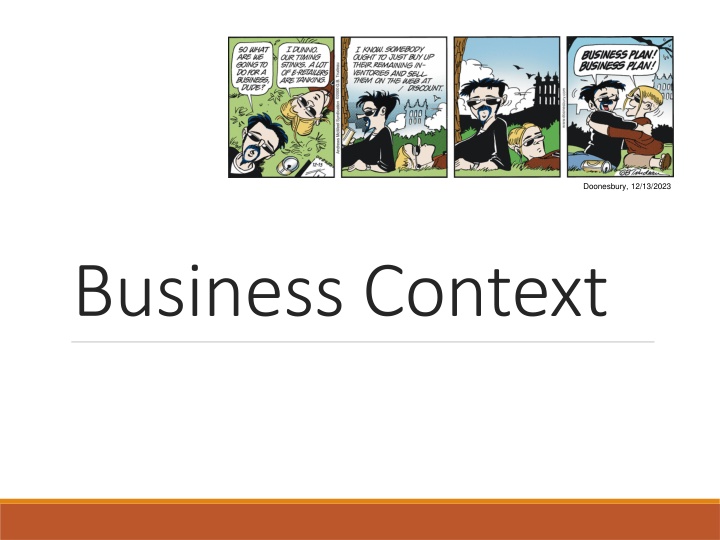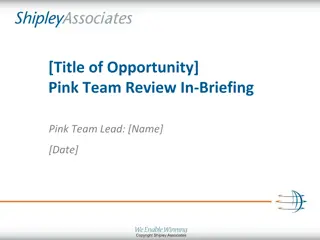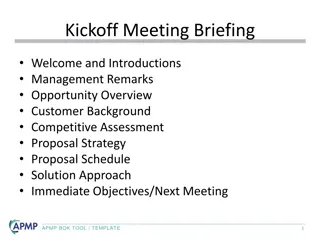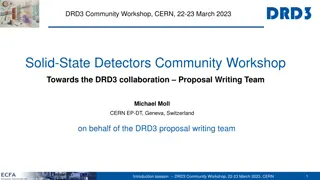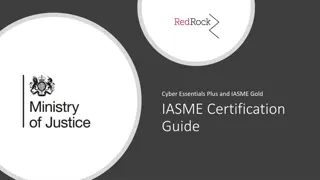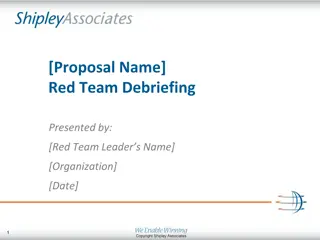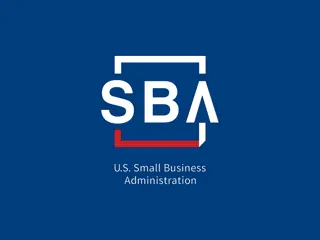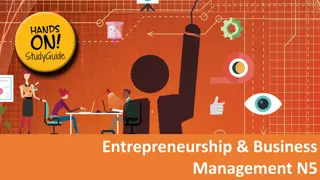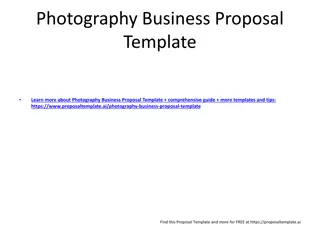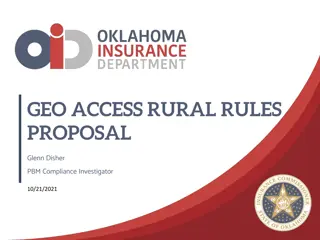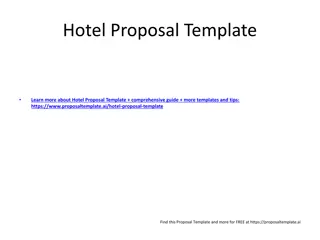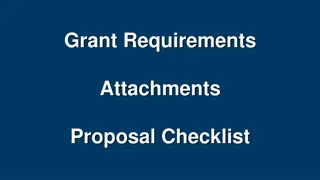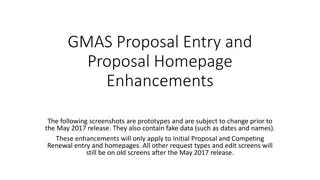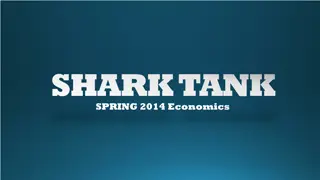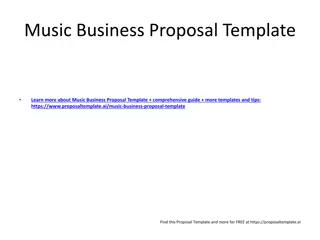Business Proposal Essentials
Dive into the key elements of a business proposal, from understanding the application domain to identifying stakeholders and project priorities. Learn about business drivers, constraints, and degrees of freedom that shape project success. Discover how market share, competition, revenue, and more influence your proposal's impact. Navigate through essential business requirements and grasp the significance of software engineering within a business context.
Download Presentation

Please find below an Image/Link to download the presentation.
The content on the website is provided AS IS for your information and personal use only. It may not be sold, licensed, or shared on other websites without obtaining consent from the author.If you encounter any issues during the download, it is possible that the publisher has removed the file from their server.
You are allowed to download the files provided on this website for personal or commercial use, subject to the condition that they are used lawfully. All files are the property of their respective owners.
The content on the website is provided AS IS for your information and personal use only. It may not be sold, licensed, or shared on other websites without obtaining consent from the author.
E N D
Presentation Transcript
Doonesbury, 12/13/2023 Business Context
Business Proposal Documents Business Proposal Documents Purpose Communicate your idea to Sr. leaders and/ or investors Document what, who and why What: The application (for software is). What it does, Who: Would want to use it, buy it, promote it, compete with it Why: It s important to do. Socially, Financially,
Business Proposal Document Audience Others in the company. Usually Sr. Leaders. People who will review, approve, fund the proposal Investors Outside people who may fund you Board members
Key factors Details, but not too much detail Most of the focus is on what , not how Include enough how to give a flavour of the concept, or important technical factors that might come up as differentiators E.g. If you have a breakthrough idea or invention, or if it is a controversial approach
Informal Elevator Pitch If you run into an influencer in an elevator, what would you say during the ride up Brief Hits highlights Conveys concepts and value Generates interest for a follow up
Business Context Essential business requirements Projects are launched when the value of solving recognized problems exceeds the cost of doing so Yes, Software Engineering requires Business awareness as well!!
Understand Business Context Learn something about the application domain Identify stakeholders Project priorities Drivers: significant success objectives; e.g., profit margin Constraints: limiting factors e.g., competition, time to market Degree of freedom: factors that can balance constraints and drivers; e.g. technology acquisition Operating environment User environment Deployment environment
Business Drivers Market share, competition Product lines Global markets Revenue Cost to develop, deploy, operate, and maintain Personnel objectives Liability, safety, reputation Standards and regulations Intellectual property Environmental and sustainability concerns
Stakeholders What is a Stakeholder? A stakeholder is any individual or organization which is actively involved in, materially affected by, or influences the outcome of the system Examples: Customers End users Purchasers IT teams Sales teams
Stakeholders 360 degrees of perspective Business Problem Customers Users Managers Analysts Investors Deployment Development TechnicalWriters Developers ServiceProviders Testers Maintainers Technical Solution
Formulate a Vision, Understand Scope Gain understanding and agreementwith the stakeholders on Problem the fundamental business opportunity or problem to be addressed Purpose what the system is intended to do to address the problem Vision the long term strategic purpose and intent of the system Scope what portion of the long term vision the current system will address System Boundary (scope) the boundaries of the problem and solution May be documented in a Vision and Scope document
Problem Statement Characterize the business opportunity With the stakeholders (to achieve consensus), formulate a problem statement using the following template: The problem of <describe the problem> Affects <the stakeholders affected by the problem> The impact of which is <what is the impact of the problem> A successful solution would <list some key benefits of a successful solution>
Example Problem Statement The problem of: untimely and improper resolution of customer service issues Affects: our customers, customer support reps and service technicians. The impact of which is: customer dissatisfaction, perceived lack of quality, unhappy employees and loss of revenue. A successful solution would: provide real-time access to a trouble- shooting database by support reps and facilitate dispatch of service technicians, in a timely manner, only to those locations which genuinely need their assistance.
System Purpose What the system is intended to do to solve the problem Essence: the fundamental purpose the system exists or will need to exist. This should tie to the original problem statement! All requirements must contribute to this purpose Example: an automated teller machine: Essence: withdraw money from my bank account Implementation: cards, PINs, buttons, etc. Lots of technological solutions, but only one essence/ essential goal What features are suggested by the proposed solution?
Purpose, Advantage, Measurement Purpose: a statement of what the system is supposed to do Advantage: what business advantage does it provide? Measurement: how do you measure the advantage? Then analyze the cost-benefit tradeoff Reasonable? Is the system construction effort (cost) less than the advantage (value)? Feasible? Can the system achieve the measure? Achievable? Does the organization have (or can it acquire) the skills to build the system, and operate it once built? [Robertson and Robertson]
Purpose, Advantage, Measurement (PAM) Example Winter Road Maintenance system Purpose: To accurately forecast road freezing times and dispatch de- icing trucks Advantage: To reduce road accidents by forecasting icy road conditions Measurement: Accidents attributed to ice shall be no more than 15% of the total number of accidents during winter Additional purpose Purpose: To save money on winter road maintenance costs Advantage: Reduced de-icing and road maintenance costs Measurement: The cost of de-icing shall be reduced by 25% of the current cost of road treatment, and damage to roads from ice shall be reduced by 50% [Robertson and Robertson]
Vision Statement of the Solution Strategic vision for how the system will achieve business objectives Decision making context during the system s life cycle Template approach with stakeholders to formulate a consensus system vision statement For <customer> Who <problem statement(s)> The <system name > Is <system category> That <keybenefits> Unlike <existing or alternative solutions> Our system <is an x that provides y>
Example System Vision Statement (Voting Machine) For voters who need to vote electronically to comply with current election laws the RIT Voting Kiosk is an electronic voting machine that will comply with all election laws, provide an easy to use interface, and be fully secure. It will be highly reliable and easy to configure for new elections. Unlike previous voting machines in the market our system will redundantly record every vote on paper to enable recounts and prevent fraud.
Cautions Functional requirements are typically what come out of problem and/ or vision statement Implied requirements are often missed E.g. Security, Simplicity, Quality Common statement - I know I didn t write it down, but it s obvious, isn t it? Lesson: WRITE IT DOWN ! From the ATM example, what are some likely implied requirements
System Scope Analysis Scope what portion of the long term vision will the current system version address? Provide development perspective in discussion with stakeholders to produce Project release plan - initial and subsequent release features What drivers and constraints? System product line strategy? System platform opportunities? Short versus long term investment
System Thinking What is the system? All of the inputs All of the outputs All of the processing flow and data management that translates inputs into outputs What is system thinking? Thinking strategically to visualize the holistic system solution Seeing the big picture Keep the system simple and management while maintaining completeness System analyst/architect role/responsibility
System Thinking (cont) Why is system thinking important? Avoid missing requirements - understand the entire system problem Stimulates innovative solutions thinking Leads to extensible system architecture design Scales and structures project scope planning System solutions add value to the user and businesses The whole is greater than the sum of the parts, AND the whole adds value to each part
Establish the System Boundaries Establish the System Boundaries Scope and scale What the system is What the system is not Draw a circle around the problem Constraints Environment Budget Schedule Technology Politics Legacy systems to integrate or replace Don t boil the ocean!
Establish the System Boundaries Establish the System Boundaries Is voice mail an actor or part of the system? System boundary? Voice Mail Callee (actor) Caller (actor) Simple Phone System
The Context Diagram A useful graphical representation of the system to be developed A visual tool for stakeholder communications that is easy to understand Establishes the system boundaries and connections Simple graphical conventions: A central circle is the abstraction of the entire system the boundary Surrounding rectangles represent terminators outside of the system that interface to it; people, other systems, organizations, devices Arrows between the system and terminators represent input and output flows of data, control, material
System Scope Representation Context Diagram Example Salesperson Financial System Operator Responses Operator Actions Inventory Record Consumer Purchases Consumer Management System Point of Sale System Inventory System Marketing Collateral Scanned Card Record Printer Scanner Card Reader
References Karl Wiegers, Software Requirements, 3rd Edition, Microsoft Press, 2003 (Chapter 5) Suzanne Robertson and James Robertson, Mastering the Requirements Process, Addison-Wesley, 1999 Rational Unified Process, IBM
